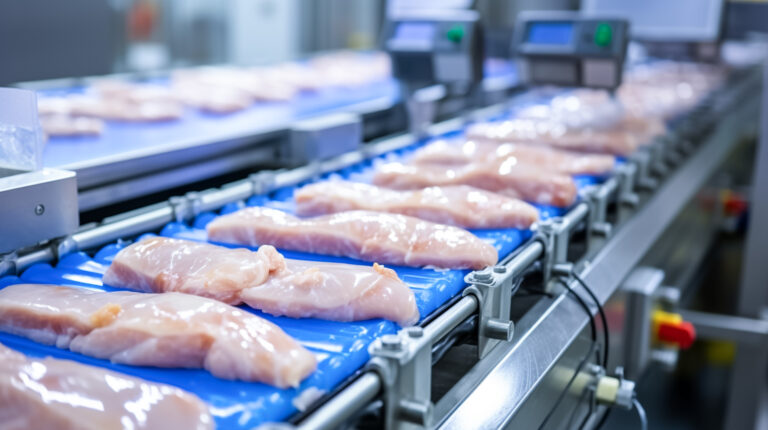With the Pathogen Reduction Monitoring Program (PRMP) for raw poultry launched by CFIA in March 2023, SFC licence holders who further process poultry carcasses and chicken parts are expected to now be implementing the program, with a similar staged approach to be taken for those producing raw comminuted poultry this year.
To help support these producers in PRMP implementation, CFIA has now released a notice providing an update on the next steps that those who slaughter poultry and produce chicken parts are required to be doing at this stage. These include:
- Those who have achieved performance standards for carcass parts and are producing raw comminuted poultry should start testing these products in 2024.
- If the results for carcass parts, comminuted poultry and carcasses did not meet performance criteria, but corrective actions were implemented but the assessment shows that more time is needed, efforts should be focused on achieving the performance criteria. During this focused period, the CFIA will not require rotation to the next type and subtype of poultry products.
- Those who only further processing poultry carcasses and chicken parts are not yet required to be compliant, but are welcome to start chicken parts monitoring and provide the collected data to the local CFIA office to help support development of the Canadian performance standards. These processors will be included in the program in 2025.
- Those who are testing product types and subtypes for which no Canadian interim performance standard exists should test and submit results to the local CFIA offices to support performance standards development.
As the performance standards are developed over the next 18 months, CFIA recommends that food businesses producing chicken parts use the interim performance standards to determine performance of their Preventive Control Plan. The interim standards are based on the statistical analysis of industry data over the past five years collected by Canadian Poultry and Egg Processor’s Council (CPEPC).
The following tables provide a comparison of the interim standards with the US Department of Agriculture – Food Safety and Inspection Service (USDA-FSIS) Salmonella/Campylobacter performance standards.
| Table 1: Standard rate of positive results | |||||
| Product type | Canadian industry performance | USDA – FSIS | |||
| Salmonella spp. | Campylobacter spp. | Salmonella spp. | Campylobacter spp. | ||
| Parts – Chicken | 18.2% | 25.2% | 15.4% | 7.7% | |
| Comminuted chicken | 19.6% | 10% | 25.0% | 1.9% | |
| Comminuted turkeys | 24.2% | No data | 13.5% | 1.9% | |
| Table 2: End cycle performance standard | ||||
| Product type | Canadian industry performance | USDA – FSIS | ||
| Salmonella spp. | Campylobacter spp. | Salmonella spp. | Campylobacter spp. | |
| Parts – Chicken | 9 of 52 | 13 of 52 | 8 of 52 | 4 of 52 |
| Comminuted chicken | 10 of 52 | 5 of 52 | 13 of 52 | 1 of 52 |
| Comminuted turkeys | 13 of 52 | No data | 7 of 52 | 1 of 52 |
The goal of a facility’s PRMP should be to reduce contamination over time, then maintain the lower level based on the following:
- Process is under control: If your results are better than the USDA and Canadian industry performance.
- Improve your process: If your results are between the USDA and Canadian industry performance standards.
- Determine and implement corrective action: If your results do not meet either USDA or Canadian industry performance, as your process is deemed to be out of control.
Throughout its discussion of the Pathogen Reduction Monitoring Program and developing performance standards, CFIA emphasizes continuous improvement, which TAG sees as of critical importance as well. Additionally, with the US now declaring Salmonella to be an adulterant – at any level – in not ready-to-eat (NRTE) breaded stuffed chicken products (due primarily to consumer perception that these products are pre-cooked), Canadian producers of these products will need to comply as well.
Although proper consumer handling, preparation, and cooking of meat and poultry products will render most safe to eat, relying on consumers to do so is not always a reliable protection, so the more industry can do to make the raw product safe, the more protection there will be for both consumers and the businesses’ brands.
Please contact TAG Canada for more information or assistance in planning compliance activities for the new CFIA program.





